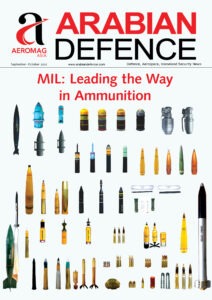
More than 35 years after its inaugural flight, the B-2 Spirit continues to set the standard in stealth technology and strategic military capability. Northrop Grumman, in partnership with the U.S. Air Force, has announced a significant advancement with the introduction of Spirit Realm 1 (SR 1), the bomber’s first fieldable, agile integrated functional capability.
SR 1 provides mission-critical capability upgrades to the communications and weapons systems via an open mission systems architecture, directly enhancing combat capability and allowing the fleet to initiate a new phase of agile software releases
“We are rapidly fielding capabilities with zero software defects through the software factory development ecosystem and further enhancing the B-2 fleet’s mission effectiveness” stated Jerry McBrearty, Director and Acting Program Manager for B-2 at Northrop Grumman. “The agile framework methodology within SR 1 directly supports the Air Force’s initiative to adapt new capabilities in the aircraft, executing the mission today.”
SR 1 features new displays and flight hardware and updates enhancing the B-2’s survivability. SR 1 was fully developed inside the B-2 Spirit Realm software factory that was established through a partnership with Air Force Global Strike Command and the B-2 Systems Program Office. The successful integration of the Spirit Realm software factory led the B-2 to become the first legacy nuclear platform to utilize the Department of Defense’s DevSecOps processes and digital toolsets.
Colonel Frank Marino, Senior Materiel Leader and B-2 Systems Program Manager with the U.S. Air Force remarked, “Our implementation of a software factory is opening new doors for the B-2 to carry future weapons and advanced capabilities that will further strengthen our country’s strategic deterrence,”
Spirit Realm leverages integrated digital tools to design, manage, build, and test B-2 software more efficiently than ever before. The tools can also link with other legacy systems to enable more rapid testing and fielding and help identify and fix potential risks earlier in the software development process. The program successfully demonstrated its agile software development capabilities in both flight and lab software by rapidly deploying a software update to the integrated test facility where the software could be verified and ultimately loaded onto the aircraft.











